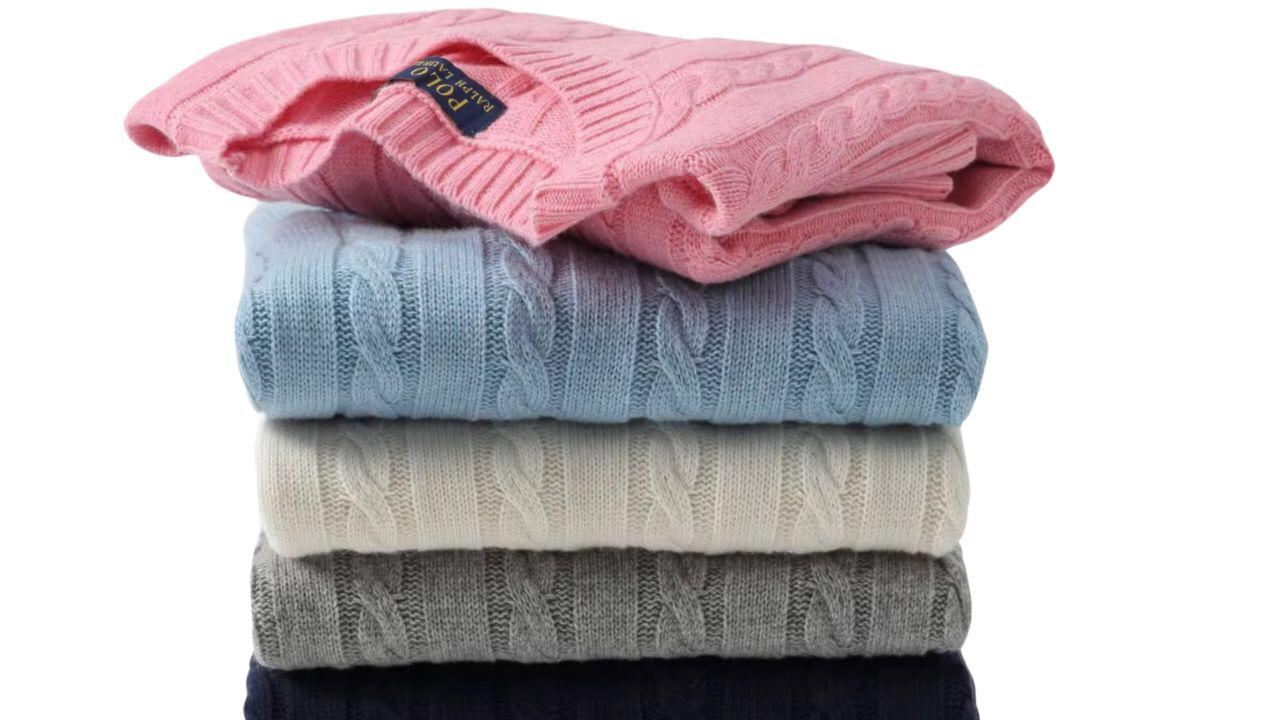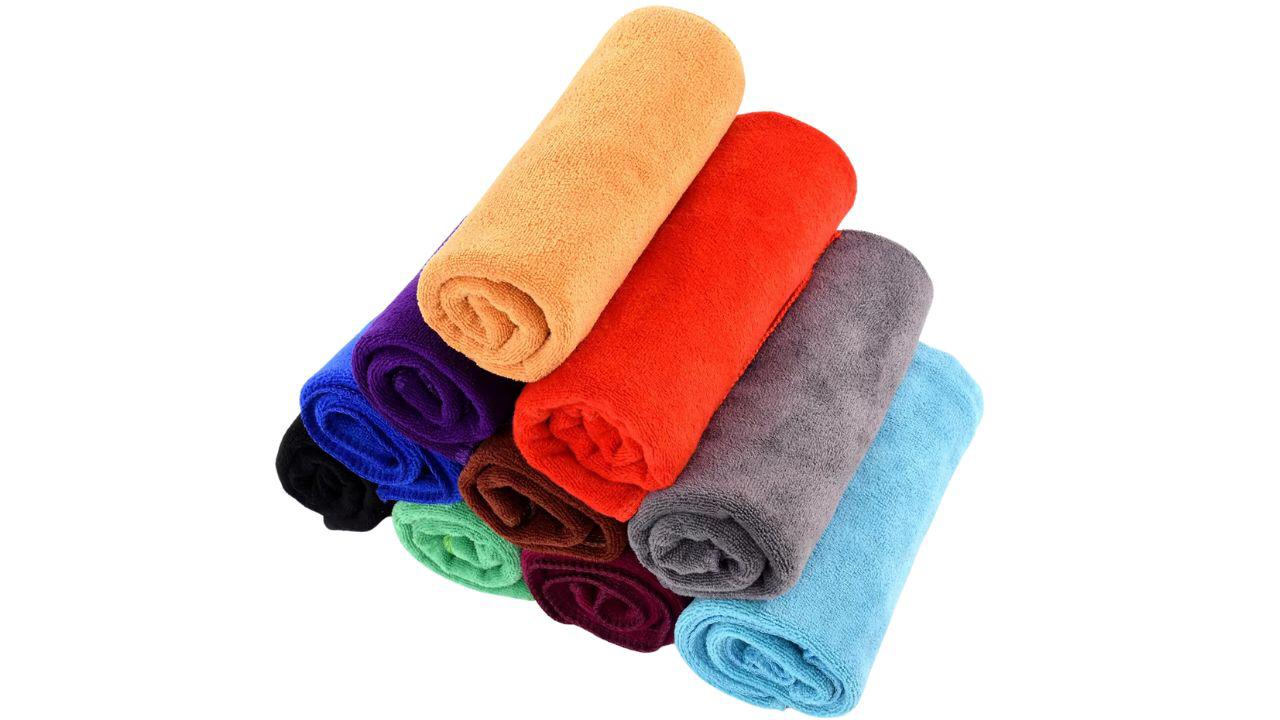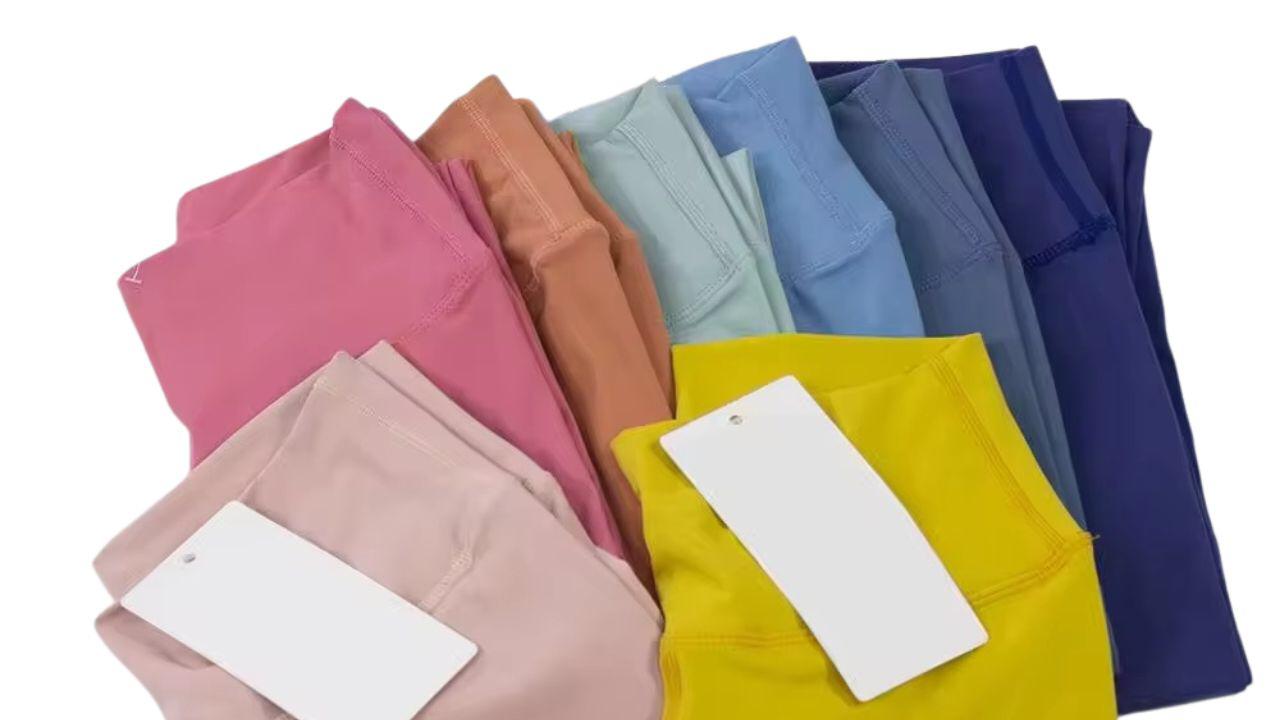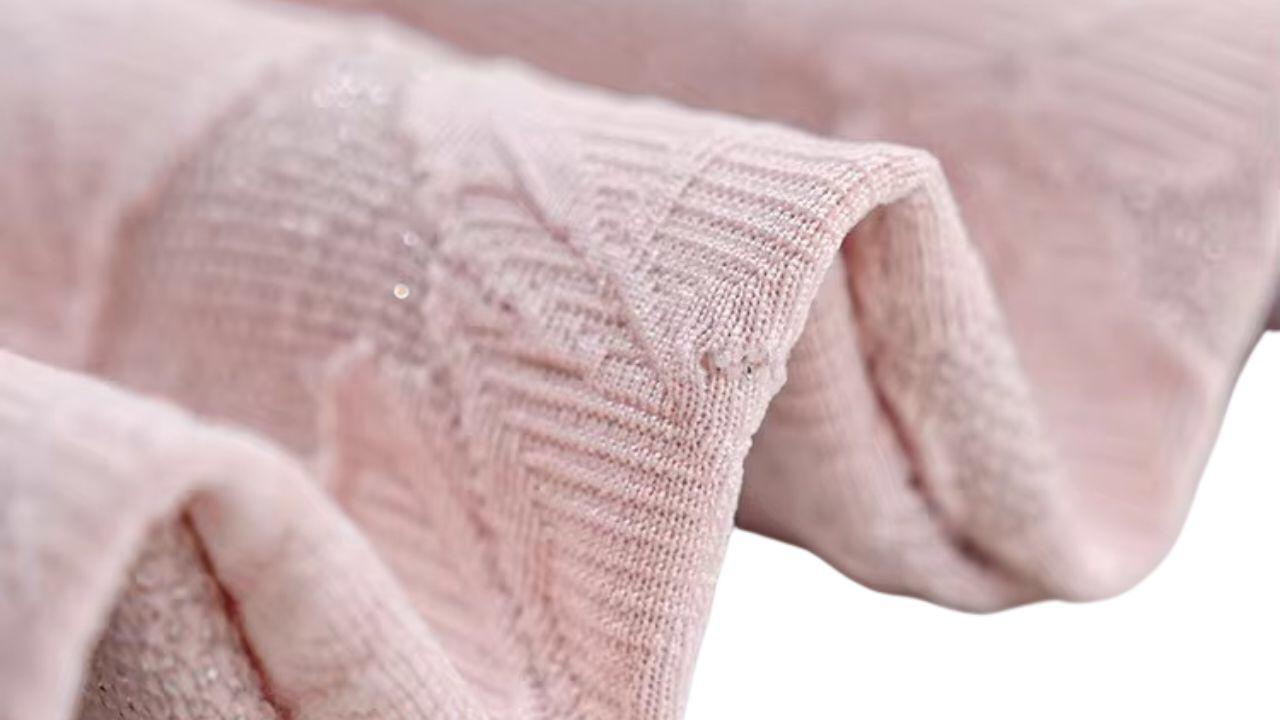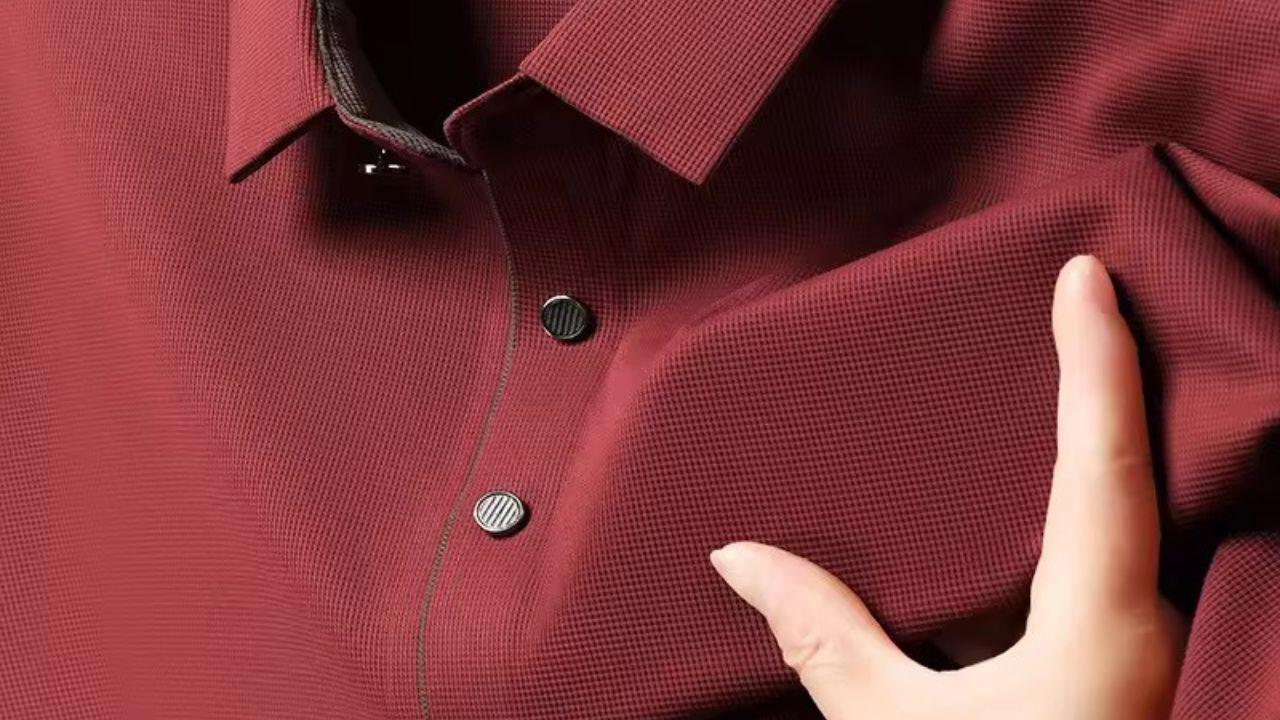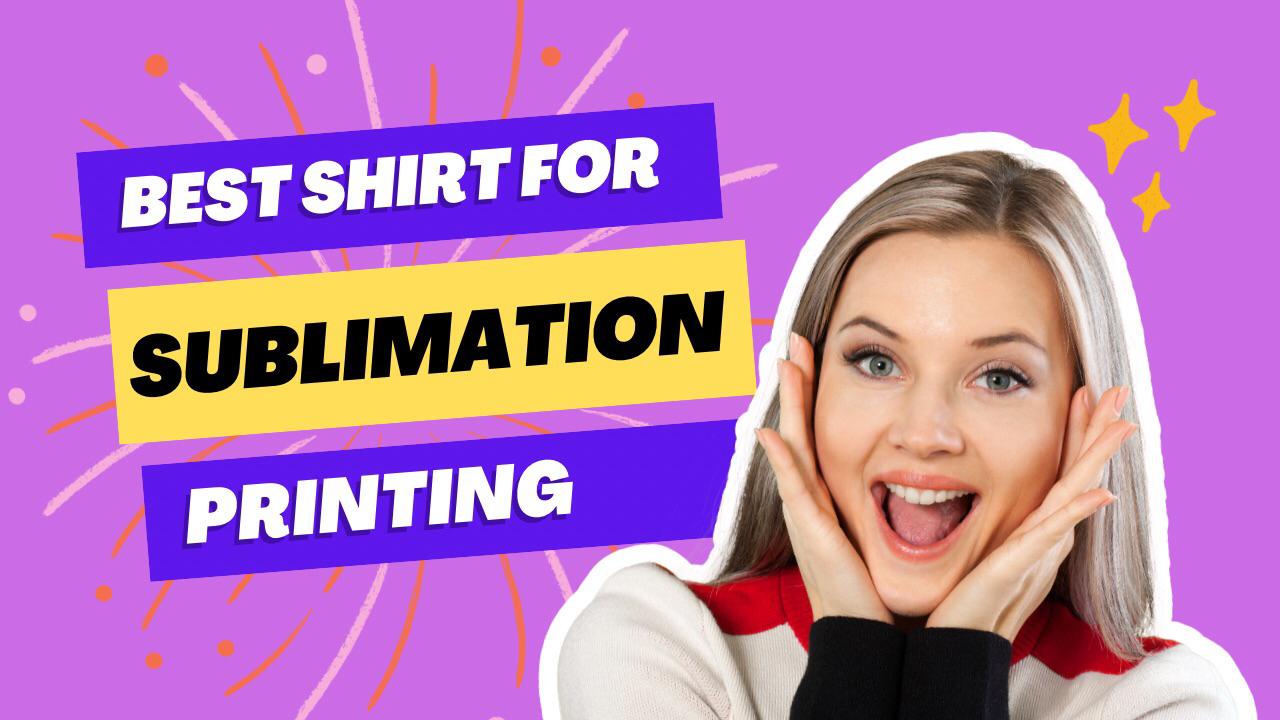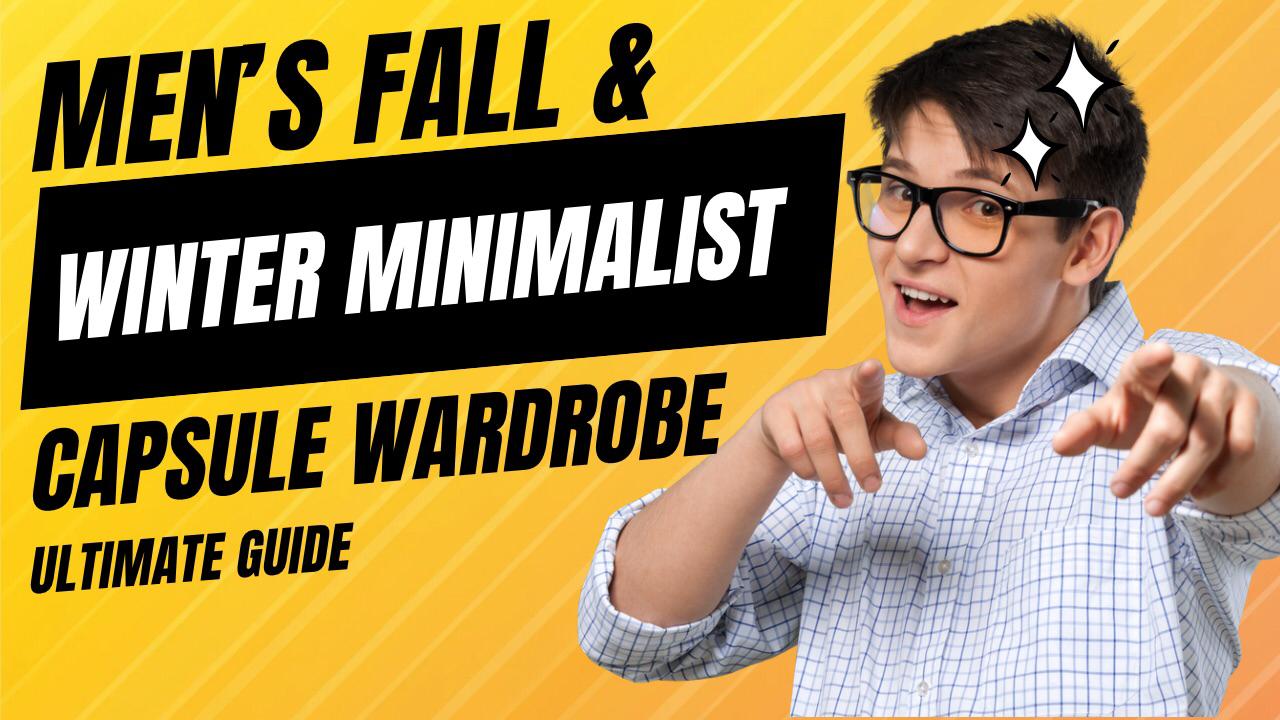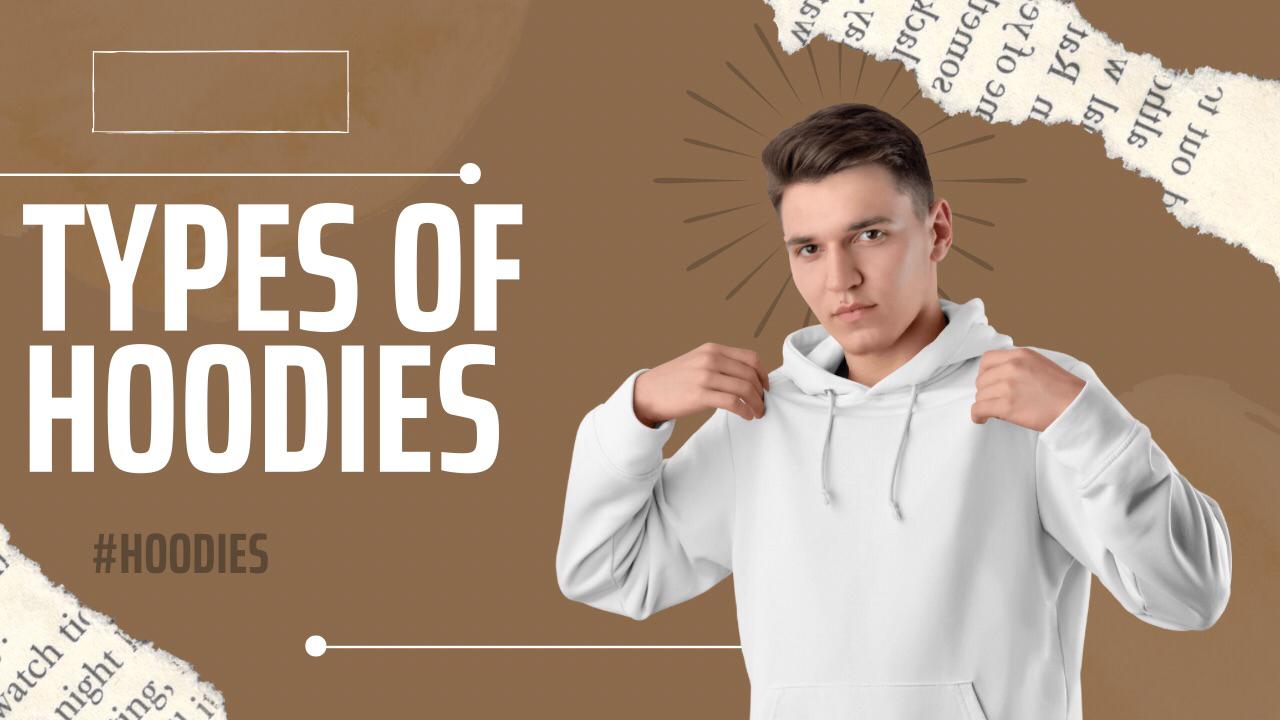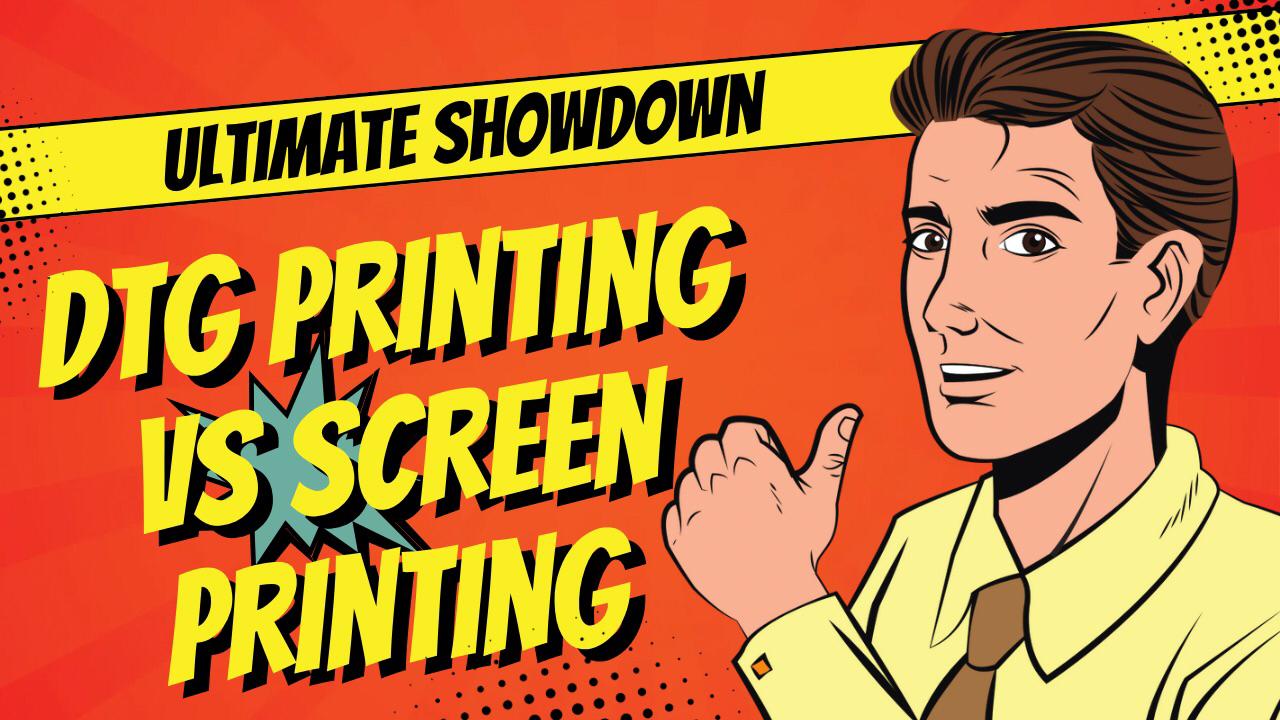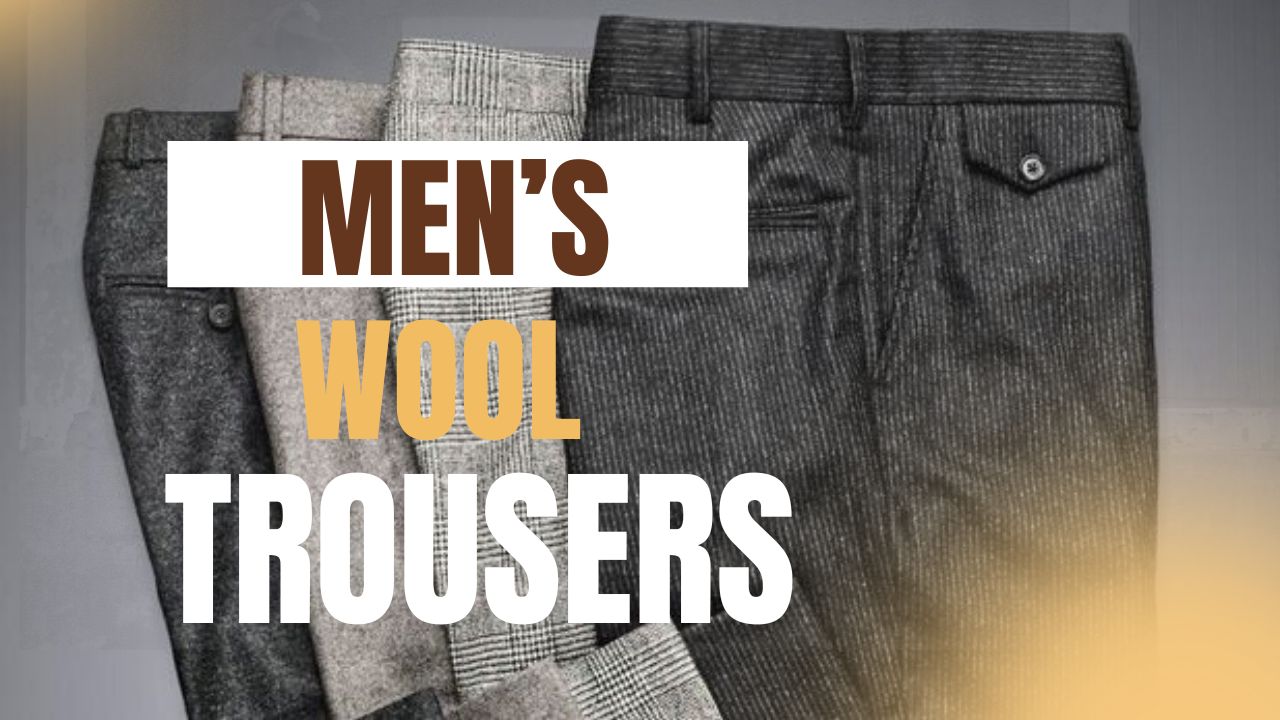Best Shirts for Sublimation Printing
Sublimation printing is an excellent method when you want high-quality prints and vibrant prints that truly stand out on your apparel. If you’re wondering What is Sublimation Printing, it involves transferring dye onto fabrics like moisture-wicking performance tees made from cotton blends or synthetic materials. These shirts are soft, comfortable, and perfect for producing stunning designs that won’t fade or crack over time. Choosing the right shirt is key—avoid mediocre shirts with boring prints to really elevate your printing game.
When deciding the best technique for your business, it helps to understand What Is Screen Printing and compare it with DTG Printing vs Screen Printing. While screen printing excels with bold, simple designs and large orders, sublimation printing offers vibrant, detailed prints best suited for polyester-rich fabrics. Knowing these differences ensures you pick the perfect printing method for your style and needs.
Best Shirts for Sublimation Printing – Pro Picks!
Which Shirts Are Best for Sublimation?
Sublimation is a printing technique that uses heat transfer to bond dye directly into the fabric, creating vibrant designs that are also durable designs. It works best on 100% polyester fabric or polyester blends because these synthetic materials hold and retain colors exceptionally well. Fabrics like cotton or silk, including common items like baseball t-shirts, are not suitable because they don’t absorb dye properly, causing prints to fade or even damage over time.
For best results in sublimation printing, use a blend of around 65% polyester and 35% cotton, which balances color retention with comfort, offering a lightweight, breathable fabric with a tight weave. This makes sublimation ideal for fashion pieces that demand both quality and durability without breaking the budget.
Shirts That Are Best for Sublimation:
-
Cricut T-Shirt: A Favorite for DIY Custom Printing
Cricut-compatible t-shirts are ideal for personalized, small-batch sublimation printing. With their smooth surface and tight polyester weave, these shirts ensure crisp image transfers and sharp colors, making them a great choice for hobbyists or startups experimenting with custom fashion.
-
Sublimation Crop Tee: Trendy and Vibrant Summer Wear
Made from 100% polyester, sublimation crop tees are perfect for full-color prints with bold vibrancy. Their flattering crop style appeals to younger audiences and works great for casual wear, summer collections, or influencer merchandise that needs to stand out.
-
Unisex AOP Cut & Sew Tee: High-Quality All-Over Prints
Ideal for fashion brands and promotional apparel, the All-Over-Print (AOP) cut & sew tee offers complete design freedom with durable, high-quality prints. Its unisex fit and comfortable fabric make it versatile for all genders, especially when targeting bulk orders or launching a premium custom line.
T-shirts from Gildan and Bella Canvas which are perfect for sublimation process
Polyester is key to the sublimation process, making it perfect for printing vibrant, clear designs. Among popular t-shirt brands, Gildan and Bella Canvas stand out for their range of polyester and polyester blend shirts ideal for sublimation. For example Gildan G420 Performance T-Shirt: Built for Sublimation Excellence
- The Gildan G420 is a 100% polyester performance t-shirt designed with moisture-wicking and antibacterial features, keeping the wearer dry and comfortable. Its even texture supports vibrant, clear prints, making it a reliable choice for sublimation printing in both casual and athletic apparel.
-
Gildan G640 Soft Style T-Shirt: Soft Feel, Custom Ready
Though not mentioned in detail above, the Gildan G640 is known for its soft style fabric and modern fit, often featuring a polyester blend suitable for light sublimation work. It’s ideal for businesses looking to balance comfort with printability.
-
Gildan 5000B Heavy Cotton Youth T-Shirt: Durable and Versatile
Blending 50% cotton and 50% polyester, the Gildan 5000B offers a traditional fit that’s both cozy and long-lasting. It’s a great option for youth sizes, school gear, or event merchandise, especially when color variety is essential.
-
Bella Canvas 3413: Heathered Texture with Stylish Depth
The Bella Canvas 3413 combines 50% polyester, 25% cotton, and 25% rayon, creating a heathered look that adds depth to designs. Its soft texture and unisex fit make it a popular choice for retail-quality sublimation tees with a modern fashion-forward appeal.
-
Bella Canvas 3001: Versatile and Customization-Friendly
The Bella Canvas 3001 features a 52% polyester / 48% cotton blend, offering a good balance for sublimation and comfort. With a tear-away label, it’s ideal for custom branding and works well for both personal and commercial projects.
-
Bella Canvas B8882: Summer-Ready Crop Style for Bold Prints
Perfect for warmer days, the Bella Canvas B8882 has a 65% polyester and 35% viscose blend. Its lightweight, ventilated fabric and airy crop design make it a top choice for trendy, casual wear or youthful branding that thrives in the summer season.
Recommendations and Guidance for Choosing the Right T-Shirt:
When choosing the right t-shirt, it’s important to think about your fashion style and how you want to meet your preferences for comfort and look. Whether you’re into basketball, varsity styles, or just casual wear, picking t-shirts that feel good and fit well is ideal. Consider what fits your daily needs, from breathable fabrics to designs that match your vibe. Comfort should always come first, so choose materials and cuts that let you move freely and feel good all day.
Before ordering, always check the size charts of the brands you like. Knowing your chest, waist, and arm dimensions helps a lot. Sizing guidelines can vary, so it’s crucial to compare them carefully to make sure the t-shirts you buy will fit well. Put some effort into understanding the measurements and how the fits of different brands differ. This way, you avoid surprises and get a great fit every time you shop.
Selecting Either Fashion Fit Or Standard Fit:
When choosing a t-shirt for comfort, think about how much room you need. Roomier options like the classic boxer style or broad types provide a relaxed fit that suits a large frame better. On the other hand, if you prefer a more stylish, form-fitting look, fashion fit t-shirts offer a contouring shape that hugs your body nicely.
The standard t-shirt fit usually balances between thin and stretchy fabrics, giving you better flexibility and movement. It’s important to select a fit that assists your body type — for instance, someone with a slimmer build might favor a contouring style, while those who want extra comfort may pick looser fits that still keep their shape intact. This way, your t-shirt always feels and looks just right.
Appropriate Fabric Selection:
Choosing the right fabric for your t-shirts means balancing softness and toughness. 100% cotton is a natural material known for its comfortable feel and great breathability, making it a popular best option for everyday wear. However, pure cotton can sometimes shrink or wrinkle, which might be a drawback for some.
To solve this, many t-shirts use polyester blends that combine the qualities of both fabrics. These blends are more wrinkle resistant and hold their color better, reducing fade over time. The polyester blend also adds durability without sacrificing too much of the soft, natural touch of cotton, making it a practical choice for those who want both comfort and long-lasting wear.
RELEVANT:Best Fabric for T-Shirts That Feels Amazing
Consider The Nature Of Event:
Color plays a major role in sublimation t-shirts, especially in athletic wear where vibrant designs and layering are common. Whether it’s for volleyball uniforms, varsity gear, or athletic jerseys, choosing the right style and design helps reflect both team spirit and individual personality. For a bold look, go with contrasting colors; for a cleaner, more versatile option, neutral tones work well for casual wear or to mix easily into any wardrobe. These shirt ideas can serve multiple purposes—you can wear them on the field or casually, depending on your preference.
Factors To Consider When Choosing The Best Shirts For Sublimation Printing
When choosing the best shirts for sublimation printing, it’s important to consider several factors to ensure high print quality and lasting results. The type of shirt plays a key role—sublimation-friendly shirts, usually made from high polyester content, deliver the most vibrant and durable prints. It’s essential to choose shirts with smooth surfaces and tight weaves, as these enhance color clarity and detail. Ultimately, picking the right fabric blend, fit, and finish will impact the outcome of your prints, making these factors critical in your selection process.
Material
Sublimation printing works best on polyester fabrics or polyester blends with a minimum of 50% polyester. The dye sublimation process requires the material to absorb and hold the dye effectively, which is why cotton and other natural fibers do not work well. For vibrant, lasting prints, always choose garments with high polyester content.
Color
Shirt color can significantly affect print vibrancy. Light-colored shirts work best for sublimation printing as they allow colors to appear more vibrant without interference. Darker-colored shirts require a white base layer to ensure the colors show up properly, which can complicate the process and affect print clarity.
Fit
The shirt’s fit can impact print quality. Loose-fitting shirts may distort the design when stretched or worn, while tight-fitting shirts may cause the print to crack or peel over time. Choosing a shirt that fits well ensures a smooth printing surface, leading to better, longer-lasting results.
Texture
Shirt texture plays a crucial role in sublimation print quality. A smooth, even texture works best, allowing for consistent and clear prints. Rough or uneven textures can blur the design or cause it to become distorted, resulting in a less professional appearance.
Top 5 Shirts For Sublimation Printing – Features, Pros, And Cons
1. Gildan G640 Softstyle T-Shirt
Features:
- Material: Primarily 100% cotton (not ideal for sublimation), though some blends are available.
- Fit: Slim fit with a modern, fashion-forward cut.
- Feel: Softstyle yarns provide a smoother, softer feel.
- Colors: Available in various colors, including heathered and blend options.
Pros:
- Affordable and widely available, great for beginners.
- Slim, tailored fit makes it a trendy option.
- Soft and comfortable material.
- Some polyester-blend versions (heathers) work moderately with sublimation.
Cons:
- 100% cotton versions are not suitable for sublimation printing — colors may appear dull or faded.
- Not optimized for vibrant or detailed sublimation prints.
- May require screen printing or HTV for better results.
2. Bella + Canvas Unisex Poly-Cotton T-Shirt (Bella Canvas 3650)
Features:
- Material: 52% combed ringspun cotton, 48% polyester – a solid blend for sublimation.
- Texture: Smooth surface allows for clear, vibrant prints.
- Fit: Modern, retail-style fit, flattering on most body types.
- Color Options: Available in many fashionable shades and heather tones.
Pros:
- Good polyester content enables decent sublimation results.
- Soft, breathable, and lightweight – great for all-day wear.
- Trendy design appeals to both men and women.
- Tear-away label makes it easy to rebrand.
Cons:
- Less durable than 100% polyester options for long-term color retention.
- Cotton content may slightly dull vibrancy compared to full polyester.
- Slightly higher price point than basic tees, depending on the supplier.
3. Sport-Tek PosiCharge Competitor Tee (Sport-Tek ST550)
Features:
- Material: 100% polyester fabric engineered for sublimation printing.
- Technology: Moisture-wicking and quick-dry properties keep you comfortable during physical activity.
- Design: Modern, athletic fit with a variety of vibrant color options.
- Performance: Designed for durability and excellent color retention through multiple washes.
Pros:
- Ideal for sublimation printing due to its polyester makeup.
- Superior moisture management keeps wearer dry and comfortable.
- Vibrant color selection enhances the look of sublimated designs.
- Durable fabric maintains print quality and shape over time.
Cons:
- Higher price point compared to basic t-shirts.
- Some may find the fit more athletic and less casual.
- Limited availability compared to mass-market brands.
4. Next Level 3600 Premium Fitted T-Shirt
Features:
- Material: 60% cotton, 40% polyester blend.
- Texture: Smooth, even surface ideal for sublimation printing.
- Fit: Modern, fitted cut that flatters various body types.
- Color Options: Available in a wide variety of vibrant colors.
Pros:
- Good print clarity thanks to the smooth fabric texture.
- Comfortable and breathable due to cotton blend.
- Affordable price point for quality and style.
- Versatile colors suitable for many design choices.
Cons:
- Less durable than 100% polyester shirts for sublimation.
- Cotton content can slightly reduce dye vibrancy.
- Fitted style may not suit all preferences.
5. Augusta Sportswear 423 Adult Short-Sleeve Baseball Jersey
Features:
- Material: 50% polyester, 50% cotton jersey knit.
- Texture: Smooth surface ideal for clear and vibrant sublimation prints.
- Design: Classic baseball jersey style with short sleeves.
- Eco-Friendly: Made with sustainability and environmental consciousness in mind.
- Color Options: Available in multiple colors suitable for athletic and casual wear.
Pros:
- Clear, vibrant prints due to smooth knit fabric.
- Environmentally conscious production, appealing to eco-aware buyers.
- Comfortable blend of polyester and cotton for everyday wear.
- Stylish sporty design ideal for teams and casual use.
Cons:
- Higher price point compared to basic t-shirts.
- Cotton content may reduce print vibrancy compared to 100% polyester.
- May not be the best fit for all sublimation projects due to fabric blend.
How to Prepare Your Shirts For Sublimation Printing
1. Wash The Shirts
To get crisp prints on sublimation shirts, always wash them first in warm water with a mild detergent to remove any dirt or residue.
Do not use fabric softener or bleach, as they affect the printing by blocking ink from bonding properly to the fibers.
2. Dry The Shirts
After washing, dry your shirts on a low heat setting or simply hang them to air dry—this helps prevent shrinkage and keeps the fabric smooth.
Do not use a high heat setting, as it can shrink or even damage the shirt before you sublimate on it.
3. Iron The Shirts
Always make sure your shirts are completely dry before ironing to remove wrinkles and creases for a smooth surface.
Use a low heat setting on your iron to avoid scorching the fabric and ensure it’s ready for perfect sublimation.
4. Cut out any labels or tags
Always cut out any labels or tags from the shirt before printing, as they can interfere with the printing process and leave marks.
I’ve learned from experience—skipping this step can ruin a perfect print, especially near the collar or hem.
Tips For Achieving High-Quality Sublimation Prints On Shirts
Use High-Quality Images
Always use high-resolution images at 300 DPI or higher to ensure prints are clear, sharp, and vibrant. Low-quality images can result in blurry or pixelated prints that diminish the overall look.
Use The Right Colors
Choose bright and bold colors that will vibrate on the shirt for the best visual impact. Avoid using dark colors or printing on dark shirts, as this can cause the print to appear muddy or unclear. Research and select the best color combinations that complement sublimation printing for optimal results.
Use The Right Pressure And Temperature
To achieve a clear and vibrant print, always use the recommended pressure and temperature settings for your sublimation printer and heat press. Performing a test print on scrap fabric before the final shirt helps you fine-tune these settings. Proper pressure and temperature ensure the dye bonds well with the fabric, resulting in high-quality, durable prints.
Care And Maintenance Of Sublimation-Printed Shirts
1. Wash The Shirts In Cold Water
Always wash shirts in cold water using a mild detergent. Avoid using fabric softeners or bleach, as these can damage the sublimation print and affect the fabric’s quality.
2. Dry The Shirts On A Low Heat Setting
To preserve the print and fabric, dry shirts on a low heat setting or better yet, hang them to air dry. Avoid high heat drying which can cause shrinking and print damage.
3. Store The Shirts Properly
Store shirts in a cool, dry place to prevent damage and fading. Proper storage helps maintain the quality and longevity of both the fabric and the sublimation print.
Other Creative Uses For Sublimation Printing On Shirts
1. Sports Jerseys
Sublimation printing is ideal for producing high-quality sports jerseys for teams and organizations. This technique allows vibrant, durable designs that withstand frequent washing and intense wear, making it perfect for athletic apparel.
2. Band Merchandise
Custom band merchandise such as t-shirts,hoodies, and hats benefit greatly from sublimation printing. It enables artists to showcase intricate, colorful designs that stand out and appeal to fans.
3. Corporate Apparel
Sublimation printing offers businesses the ability to create custom corporate apparel like polo shirts and dress shirts. The vibrant prints enhance brand visibility while providing professional, comfortable clothing options for employees.
Advantages of Shirt Sublimation
Vibrant and Long-lasting Prints
Sublimation printing produces vibrant, long-lasting prints that make designs truly stand out. Using unique dye sublimation inks that transform from a solid state to gas when heated, this process embeds color deeply into the fabric. Compared to traditional printing methods, sublimation prints retain their richness and vibrancy even after multiple washes, ensuring sparkling, durable designs.
Versatility In Design
One of the greatest strengths of sublimation printing is its versatility in design. It supports intricate, detailed artwork with a full-color range, allowing for many colors in a single design. Whether creating wholesale hoodies in Dallas or custom apparel elsewhere, sublimation removes limitations, letting brands unleash creativity with stunning and dynamic designs.
Soft And Breathable Prints
Sublimation prints are uniquely soft and breathable because the ink is absorbed into the fabric fibers during the heating process. This means there’s no extra texture or weight on the fabric, making the prints part of the shirt itself. The result is comfortable printed shirts that feel soft to the touch and remain breathable, perfect for wearing extended periods.
Durability and Washability
Sublimated prints are known for their durability and washability. They are highly resistant to fading compared to traditional screen printing and heat transfer vinyl because the ink is permanently embedded into the fabric. This makes sublimation designs less susceptible to cracks, peels, or washouts, keeping them vibrant and intact even after numerous washes. This quality is especially valued in products like Big & Tall Long Sleeve T-Shirts and custom golf polo shirts, where long-lasting performance is key.
Polyester Compatibility
A critical factor for successful sublimation printing is polyester compatibility. Sublimation ink bonds seamlessly with polyester and polyester-coated materials, integrating directly into the fibers. This ensures the print becomes part of the fabric rather than sitting on top. It makes sublimation printing ideal for performance t-shirts, activewear, and other polyester-based garments, delivering vibrant and durable results.
Economic for Small-Batch Production
Sublimation printing offers significant economic advantages for small-batch production. Unlike screen printing, which requires multiple screens and setup time for different colors, sublimation can produce multi-color prints in a single pass. This eliminates costly screen setups and reduces both cost and production time. The combination of vibrant, long-lasting prints, design versatility, soft breathable prints, durability, and polyester compatibility makes sublimation the preferred choice for businesses seeking high-quality, customized shirts with stunning, durable designs at an affordable price.
Disadvantages of Shirt Sublimation
One of the biggest disadvantages of sublimation printing is that it works only on polyester or polyester-coated materials. For example, baseball jerseys made from polyester blends work well, but fabrics with a high percentage of cellulose fibers like cotton or silk do not allow the dye to permeate properly, making sublimation ineffective or unsuccessful on such materials.
Additionally, the process relies on transfer paper to imprint designs, which can limit some printing applications. The initial cost of sublimation equipment is relatively high, including the printer, transfer paper, and heat press, making the upfront investment a barrier for some businesses.
Benefits of Using Sublimation Printing for Shirts
Sublimation printing is a popular technique that uses heat to transfer dye onto materials, mainly polyester fabrics. The dye is converted into a gas and then infused permanently into the fabric fibers, resulting in high-quality, vibrant, and durable prints.
The benefits of sublimation printing for shirts include the ability to produce permanent, full-color designs that do not crack, peel, or fade. It allows for intricate, detailed designs with a soft feel, since the ink becomes part of the fabric rather than sitting on top. Sublimation is ideal for producing high-quality custom shirts with long-lasting prints that stand out.
Vibrant Colors
Sublimation printing produces vibrant, long-lasting colors that do not fade or crack over time. The colors are permanently infused into the fabric, resulting in a soft, smooth finish that won’t peel like traditional screen-printed shirts.
Versatile
Sublimation printing works on various materials, including cotton blends, ceramic, metal, and especially 65% polyester shirts. This versatility allows for a wide range of custom product designs such as t-shirts, mugs, and phone cases.
Durability
Sublimation prints are highly durable and can withstand multiple washes without losing color quality. They are resistant to fading, cracking, and peeling, making sublimation ideal for sports teams, businesses, and organizations seeking long-lasting custom apparel.
All-Over Printing
Sublimation printing allows for all-over printing, creating designs that cover the entire shirt, including sleeves and back. This technique produces eye-catching apparel that truly stands out from the crowd.
Can We Use 50/50 Shirts for Sublimation?
Sublimation works best on 100% polyester shirts because the dye bonds effectively with polyester fibers. For 50/50 shirts (cotton/polyester blends), the sublimation ink mainly bonds with the polyester content, which can result in less brilliant and vibrant prints compared to 100% polyester.
Analysis on 50/50 Cotton Shirts – An Overview
50/50 shirts offer a balance of comfort, durability, and affordability, making them popular choices for t-shirts. However, because sublimation printing requires a high proportion of polyester, these blends may not produce the best print results. While sublimation is possible, the print quality on 50/50 shirts often falls short of the brilliance and durability achieved on 100% polyester shirts.
The Print Quality Will Be Lower
The interaction between materials and dye affects print quality. While 100% polyester allows sublimation dyes to bond deeply with polyester fibers, 50/50 cotton shirts contain cotton fibers that do not hold the dye well. This often results in a vintage or distressed-looking print that is less saturated and more prone to fading.
The Print Durability Will Be Lower
Prints on 50/50 cotton shirts tend to have lower durability. Sublimation prints on cotton fibers have reduced tenacity and resistance to washing, peeling, and cracking. Exposure to heat, sunlight, and frequent washing can cause the artwork to deteriorate faster compared to prints on 100% polyester basketball jerseys or similar garments.
The Print Process Will Be Different
Sublimation printing on 50/50 cotton shirts requires higher pressure and temperature settings compared to 100% polyester shirts. Additionally, treatments like sublimation spraying or coating may be applied to help the dye stick more effectively to the cotton-polyester blend fabric, but the process is less straightforward and can affect overall print quality.
Recommendations and Guidance for Choosing the Right T-Shirt
When selecting the right t-shirt for sublimation printing, it’s crucial to consider the fabric composition to achieve the greatest results. Proper t-shirts maximize print vibrancy and durability while minimizing common difficulties and restrictions.
- Avoid 50/50 shirts and tri-blend t-shirts for sublimation because their cotton fibers interfere with dye absorption, often causing a vintage or distressed-looking print that fades quickly.
- Cotton fibers do not bond well with sublimation pigments, leading to prints that are faded, peeling, or cracking after exposure to washing, heat, and sunlight.
- For designs like Baseball Varsity T-Shirts, fabric quality is even more important, as poor material can cause prints to deteriorate faster.
Choosing shirts with a high polyester content is essential to avoid these issues and maintain vibrant, long-lasting designs.
Is 65% Polyester 35% Cotton Tees Perfect for Sublimation?
The 65% polyester, 35% cotton blend tees are a popular middle ground offering both print quality and comfort, but they have pros and cons depending on your needs:
- Advantages:
- Higher polyester content allows sublimation inks to produce brilliant colors, sharp details, and high color saturation.
- The blend maintains some of the softness, breathability, and comfort of cotton, making these tees comfortable for extended wear.
- Brands like EXPRESS STITCH INDUSTRIES Blank Apparel offer this blend, balancing vibrancy and comfort for everyday apparel.
- Considerations:
- While the print quality is good, it will not be as intense or durable as on 100% polyester shirts.
- The cotton portion may slightly reduce the resistance to fading and peeling over time.
- These tees are suitable when comfort and breathability are priorities alongside good sublimation effects, especially for warmer weather or casual wear.
In summary, 65/35 tees are a good choice for sublimation printing if you want a balance of vibrant color and comfort, but for maximum color brilliance and longevity, 100% polyester shirts remain the better option.
Can 65% Polyester 35% Cotton Tees Be Used for Sublimation or Not?
Polyester-cotton blends like 65% polyester and 35% cotton tees are popular apparel choices that combine the best properties of both fabrics. When it comes to sublimation printing, these blends can be used, but with certain considerations.
Polyester-Cotton Blends and Sublimation Printing
- The 65/35 blend offers a fabric that is partly polyester, which is necessary for sublimation inks to bond with the fibers effectively.
- However, the 35% cotton portion may limit how vibrant and durable the sublimation print will be because sublimation inks bond best with polyester fibers.
- These blends are often used in tear-away t-shirts and other apparel where comfort and moderate print quality are acceptable.
Comfort and Durability
- The blend balances the softness and breathability of cotton with the strength and durability of polyester.
- The cotton component makes the fabric comfortable and breathable for the wearer, while the polyester enhances the garment’s longevity and resistance to wear.
- Compared to pure cotton tees, 65/35 blends generally last longer and maintain their shape better.
Moisture-Wicking Properties
- One major advantage of polyester is its excellent moisture-wicking ability.
- The polyester fibers pull sweat away from the skin, helping the wearer stay dry and cool, which is a significant benefit for athletic t-shirts and activewear.
- This makes 65/35 blends suitable for sportswear and casual wear, combining comfort with performance.
Wrinkle-Resistance
Polyester is naturally wrinkle-resistant, making it ideal for t-shirts that maintain a neater, polished appearance throughout the day. When polyester is blended with cotton, the resulting shirts tend to have fewer wrinkles compared to 100% cotton tees, which helps in keeping sublimation-printed shirts looking fresh and sharp.
Sublimation Printing
Sublimation printing is a technique where special inks are infused permanently into the fabric using heat. This process produces vibrant and long-lasting designs that won’t peel or crack. For sublimation to work effectively, the fabric needs a high polyester content, as the sublimation ink is specially designed to bond with polyester fibers during the heat transfer process. Fabrics with lower polyester content, like blends with a lot of cotton, often yield less vivid prints.
Where to Buy the Best Shirts For Sublimation Printing?
To get the best shirts for sublimation printing, consider purchasing from online and specialty shops that focus on sublimation-friendly apparel. Popular options include EXPRESS STITCH INDUSTRIES, which offers a wide range of polyester and polyester-blend shirts from various brands. These suppliers provide wholesale t-shirts at reasonable prices, making them a great choice for both small businesses and personal projects focused on high-quality sublimation prints.
Crucial Elements for Choosing the Best Sublimation Shirts
Fabric Type
The fabric is the foundation of any sublimation shirt. 100% polyester t-shirts are ideal because sublimation ink chemically bonds with polyester fibers, resulting in vibrant, long-lasting prints. While polyester blends may work, higher polyester content ensures better print quality.
Fabric Weight
Choosing the right fabric weight depends on the intended use and climate. Lighter weight fabrics are perfect for warm weather and sports, offering breathability and comfort. For cooler climates or more durable apparel, heavier weights are better suited.
Color
Start with white or light-colored quarter sleeve t-shirts as your base. These act as a blank canvas that allows sublimated colors to pop vividly. The base color of the shirt significantly influences the final print result, so lighter shades typically provide the best output.
Smooth Surface
T-shirts with a smooth, even surface such as cap sleeve styles or combed cotton blends produce the sharpest and clearest prints. Avoid highly textured fabrics or ribbed designs, as these can distort the print and reduce clarity.
Sublimation Certification
Opt for shirts from manufacturers who provide sublimation certification or recommendations. Such certification assures compatibility and quality, and it’s wise to follow advice from experienced sublimation printers.
Fit and Style
Consider the t-shirt style and fit based on preferences and intended use. Common options include crew neck t-shirts, V-neck t-shirts, and short sleeve t-shirts. For sports like volleyball, look for styles like volleyball jerseys available in slim fit or relaxed cut to ensure comfort and functionality.
Test Prints
Before placing a bulk order, conduct test prints on sample t-shirts to assess color reproduction, print quality, and fabric behavior. This step helps avoid costly mistakes and guarantees satisfaction with the final product.
Supplier Reputation
Purchase from reputable suppliers known for quality sublimation shirts, such as EXPRESS STITCH INDUSTRIES. Check reviews and recommendations from other sublimation printers and businesses to ensure you receive reliable products.
Conclusion
Sublimation printing is truly a game-changer in producing high-quality, long-lasting prints on shirts. Using the right shirts combined with proper techniques ensures stunning results that impress. This guide provides valuable insights to help you choose the best shirts for sublimation printing, along with useful tips and tricks for achieving the best possible results. Don’t settle for boring prints on mediocre shirts—upgrade your printing game by selecting top-notch, sublimation-friendly shirts that bring your designs to life with vibrant color and lasting durability.
Frequently Asked Questions (FAQ)
Q1: Can I use 100% cotton shirts for sublimation printing?
A: No, sublimation printing works best on polyester or polyester-blend fabrics with at least 50% polyester content. Cotton does not hold sublimation ink well, resulting in faded or dull prints.
Q2: Is a 65% polyester and 35% cotton blend suitable for sublimation?
A: Yes, shirts with 65% polyester and 35% cotton can be used for sublimation. They offer a good balance of comfort and print vibrancy, though 100% polyester shirts usually produce the brightest and most durable prints.
Q3: What shirt colors work best for sublimation printing?
A: Light-colored shirts, especially white, are ideal because they allow the sublimation colors to pop vividly. Dark shirts require special treatment and usually don’t deliver the same vibrant results.
Q4: How important is the fabric texture for sublimation?
A: Very important! Shirts with a smooth and even texture provide the best surface for clear and sharp sublimation prints. Rough or textured fabrics can cause print distortion.
Q5: Can sublimation printing be done on tri-blend shirts?
A: Tri-blends typically contain lower polyester content and more natural fibers, which may result in less vibrant and durable prints. It’s better to choose shirts with higher polyester percentages for sublimation.
Q6: How should I care for sublimated shirts?
A: Wash sublimated shirts in cold water with mild detergent and avoid bleach. Use low heat or air dry to prevent shrinkage and fading. Proper care helps maintain vibrant, long-lasting prints.
Q7: Where can I buy quality sublimation-friendly shirts?
A: Reputable brands like EXPRESS STITCH INDUSTRIES and Bella Canvas offer excellent sublimation-friendly shirts. You can find them through specialty retailers, wholesale suppliers, or trusted online shops such as Veetrends.


